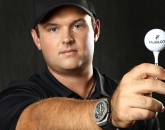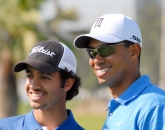Mind you, they probably never needed to do such a thing in the first place. To no small extent, Seve Ballesteros was Spanish golf. It was mostly down to him that Spain has become such a force in the golfing world – and mostly down to him that golf captured the imagination of so many youngsters in the 1970s and 1980s. Not just in Europe but all over the world.
When Phil Mickelson opted for a Spanish menu at his Champions’ dinner at this year’s Masters, it had nothing to do with the fact that Seve had called his dog "Phil Mickelson" after the canine version had made its boisterous arrival a day or so after the American won his second Masters. Instead, it was out of deference to the effect the Spaniard had had on his career.
 “Just being back at Augusta,” said Mickelson, “reminds me of when I was ten-years-old and watching Seve win in 1980. That was when I said to my mum, 'I want to be like that and I want to win that tournament.'" Ballesteros, of course, won three Open and two Masters titles between 1979 and 1988, all of which furnished him with a rich seam of upbeat thoughts as he neared the end of his life. “Thank God,” he said earlier this year, “that I have lots of positive things to ponder.”
“Just being back at Augusta,” said Mickelson, “reminds me of when I was ten-years-old and watching Seve win in 1980. That was when I said to my mum, 'I want to be like that and I want to win that tournament.'" Ballesteros, of course, won three Open and two Masters titles between 1979 and 1988, all of which furnished him with a rich seam of upbeat thoughts as he neared the end of his life. “Thank God,” he said earlier this year, “that I have lots of positive things to ponder.”
He chuckled even at his reputation for being able to win “from places where it was impossible.” Sometimes, as he would approach his drive in some far-flung outpost – such for example, as behind an out-of-the-way wall on the eighteenth at Crans-sur-Sierre in 1993 – he would revel in hearing people say, ‘Which way is he going to go…This way or that way?’
On that afternoon in Switzerland, he invented a shot which arrived at the entrance to the green to pave the way for an improbable birdie. It wasn't quite enough to win but it is widely considered the most outrageous escape in European Tour history.
Most of his favourite moments, it has to be said, coincided with the favourite “Seve moments” of others ...











